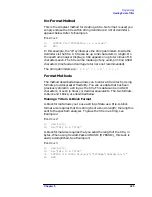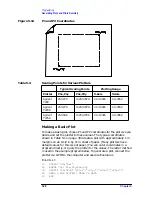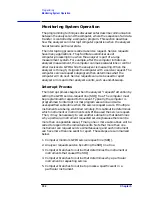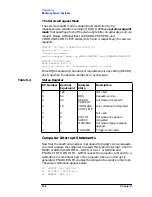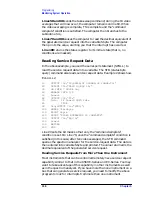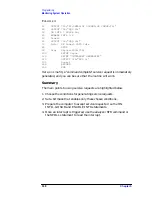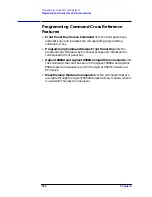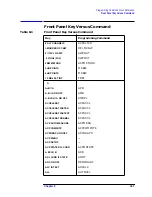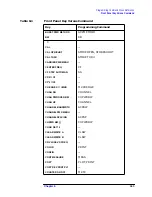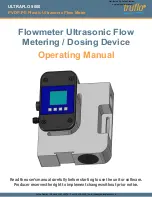
Chapter 5
333
Programming
Monitoring System Operation
Some of the routines (that are shown above) can be omitted, if only one
instrument has been instructed to use the SRQ line, or if a particular
instrument has been instructed to use the SRQ line for only one event.
Several system-level statements are required to make the computer
respond to service requests. The HP BASIC statement, ENABLE INTR
(enable interrupt), tells the computer to monitor the service-request
line. The on-interrupt statement, ON INTR, specifies where the
computer program will branch when a service request occurs. If more
than one instrument could cause the service request, or if an
instrument can cause a service request for more than one reason, the
serial-poll statement, SPOLL, is used. The serial-poll statement is
always required to clear the service request being generated by the
instrument.
Analyzer Status Byte
The analyzer status byte indicates the status or occurrence of certain
analyzer functions. The status byte contains eight bits, numbered 0 to
7, with bit 0 being the least significant bit.
Bits 0, 1, 2, 3, 4, 5, and 7 represent specific conditions or events. These
bits are referred to as condition bits and event bits. Condition bits
reflect a condition in the analyzer that can be present or absent at any
given moment. Event bits reflect the occurrence of a transition or event
within the analyzer.
Bit 6 is set by the analyzer to indicate whether or not it is requesting
service.
When the analyzer is instructed not to use the service request line on
GPIB, the status bits always reflect the current condition of the
analyzer. In this situation, the event bits in the status byte should not
be used. Event bits are only true at the exact instant of a transition in
the analyzer and as such are not reliable when service requests are
disabled.
When the analyzer is instructed to generate service requests for one or
more conditions or events, the status bits reflect the current condition
of the analyzer until a service request is generated. Then, the bits that
are generating the service request are held true until the status byte is
read out of the analyzer (by the HP BASIC SPOLL system-level
statement), by the STB? command, or until a GPIB DEVICE CLEAR
(HP BASIC CLEAR system-level statement) is received. These actions
clear the status byte to once again reflect the current conditions and
events within the analyzer.
Summary of Contents for 8560E
Page 21: ...21 1 Quick Start Guide ...
Page 48: ...48 Chapter1 Quick Start Guide Manuals Available Separately ...
Page 49: ...49 2 Making Measurements ...
Page 164: ...164 Chapter2 Making Measurements Example 13 Making Pulsed RF Measurements ...
Page 165: ...165 3 Softkey Menus ...
Page 182: ...182 Chapter3 Softkey Menus Menu Trees ...
Page 183: ...183 4 Key Function Descriptions ...
Page 228: ...228 Chapter4 Key Function Descriptions Key Descriptions Figure 4 3 CRT Alignment Pattern ...
Page 289: ...289 5 Programming ...
Page 323: ...Chapter 5 323 Programming Math Functions Figure 5 10 Display Units ...
Page 339: ...339 6 Programming Command Cross Reference ...
Page 369: ...369 7 Language Reference ...
Page 654: ...654 Chapter7 Language Reference VTL Video Trigger Level ...
Page 655: ...655 8 Options and Accessories ...
Page 665: ...665 9 If You Have a Problem ...
Page 674: ...674 Chapter9 If You Have a Problem Power Requirements Figure 9 2 AC Power Cables Available ...







